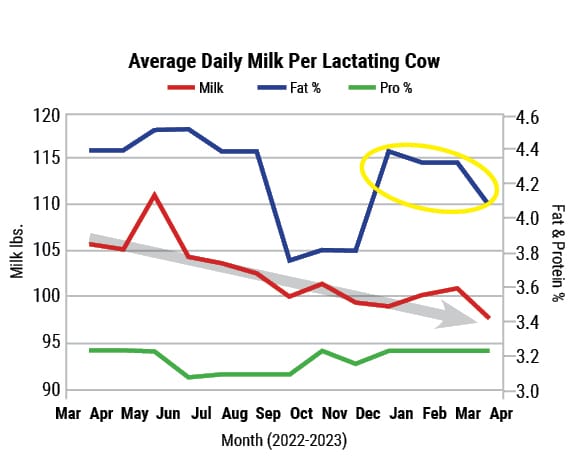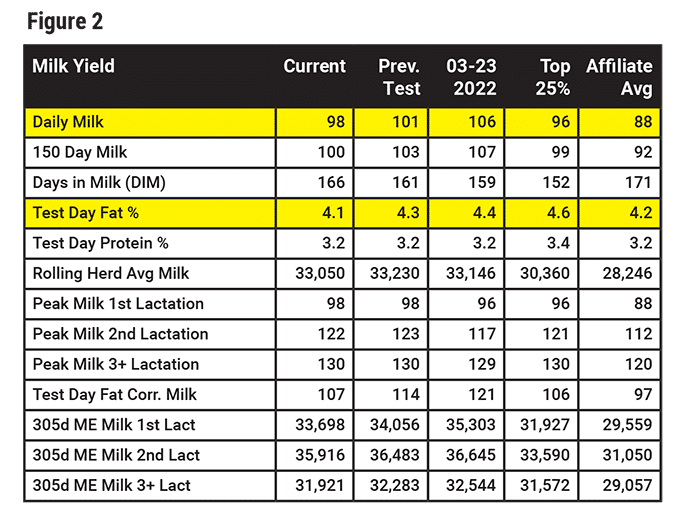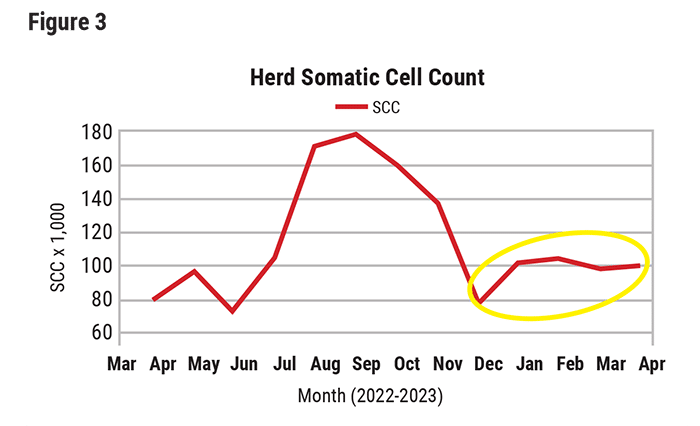Dr. Kelly Sporer, CentralStar Records Analysis Consultant
Every time my husband leaves the house, he says out loud, “keys, wallet, cell phone.” Why? These are essential items he won’t get far without, but with them, he can get anywhere and accomplish anything.
On your dairy, what are the “keys, wallet, cell phone” for managing your herd and being profitable? As obvious as it may seem, the answer is milk weights, components, and somatic cell count (SCC) data. When you have these key pieces of information for every cow in the herd, it provides valuable insights into what else is going on at the cow level that can be managed.
Milk weights, components, and SCC are easily accessible through monthly DHI testing. If you already utilize DHI, you have the “keys, wallet, cell phone” to effectively manage your herd. Granted, the amount of data returned after a DHI test can be overwhelming, and just taking a quick glance at your Hotsheet during morning coffee may lead to missed opportunities to improve production and profitability. However, there are other tools, such as the DHI 402-Herd Evaluator report that gives you a more comprehensive, yet easy-to-read summary that helps you keep tabs on herd performance.
The Herd Evaluator report summarizes key areas that cover the top-six factors that affect profitability on Midwest dairies, according to a longitudinal study by Zoetis-Compeer Financial. Let’s dig into two of those factors: Energy-Corrected Milk (ECM) and SCC.
Milk Weights + Components = ECM

Figure 1
Figure 1 in the Herd Evaluator report gives you a quick visual to monitor trends in pounds of milk and components, which make up ECM. Looking at this herd, I see several things going on that warrant further investigation. In reviewing Figure 2, production looks excellent with all variables at or above the top 25% of CentralStar DHI herds (Affiliate Average), but milk production is on an overall downward trend for about a year. Next, I see that Fat % took a huge dive between September and October, and although it seems to have recovered by January, it has been decreasing the last three tests. Lastly, overall, this herd’s components are at or below the average, so there may be an opportunity to increase fat production.

Once you see the opportunities, you can begin to ask questions and take corrective action. If I were working with this herd as a consultant, I’d start with getting the “whole gang together” (key farm personnel, veterinarian, nutritionist, etc.) to review the data. Initial questions I would ask are: Have the herd dynamics changed in the last year, ( i.e. Do first-lactation cows make up a larger proportion of the herd?). Has there been a change to the ration that would explain the drop in Fat %? What are the herd’s goals for Combined Fat and Protein (CFP) and are they achieving it? Beyond the tactical mode, think about longer-term solutions to help these areas, like selecting genetics to make improvements with CFP, or longevity by using Herd Health Profit Dollars (HHP$™).
SCC
Next, let’s look at the report’s SCC analysis. We know that SCC is one of the top factors affecting dairy profitability and that many cooperatives offer incentives for high-quality milk with low SCC. As a consultant, I also see the effects high SCC can have on production and even reproduction.

In this herd, it looks like they identified the cause of the skyrocketing SCC last summer (Figure 3) and corrected it, but as we head into summer, it appears as if SCC is creeping up again, and we don’t want to repeat history. Does this farm have a good plan in place?
Looking at the data there are a variety of questions to pose to the dairy team. What was the issue last time? Did we identify the “bugs” causing the problem? Was there an issue with bedding or environment that was addressed? Were new infected animals purchased?
Beyond those initial areas, again we can think of longer-term strategies. Consider implementing a monthly mastitis testing program through DHI samples to monitor the “usual suspects” and get ahead of any new mastitis-causing pathogens or an uptick in the usual bugs. Another consideration is to incorporate mastitis resistance genetics to build healthier cows.
There’s no arguing that the amount of data generated from DHI can be overwhelming, leading you to miss profit opportunities, but that doesn’t have to be the case. Using key-summary reports like the 402-Herd Evaluator helps you identify what’s important to monitor and manage, as well as how you compare to industry standards, helping you reevaluate your own goals. At an investment of pennies, a day, DHI is arguably one of the best investments you can make for your dairy.
If you are currently utilizing DHI, great, but make sure you are taking advantage of all the benefits it offers. If you are not yet routinely using DHI, why not? Like your keys, wallet, and cell phone, you won’t get far without individual-cow milk, components, and SCC data.
In subsequent articles, we will look at more key factors that affect profitability that are also summarized in the Herd Evaluator report.
